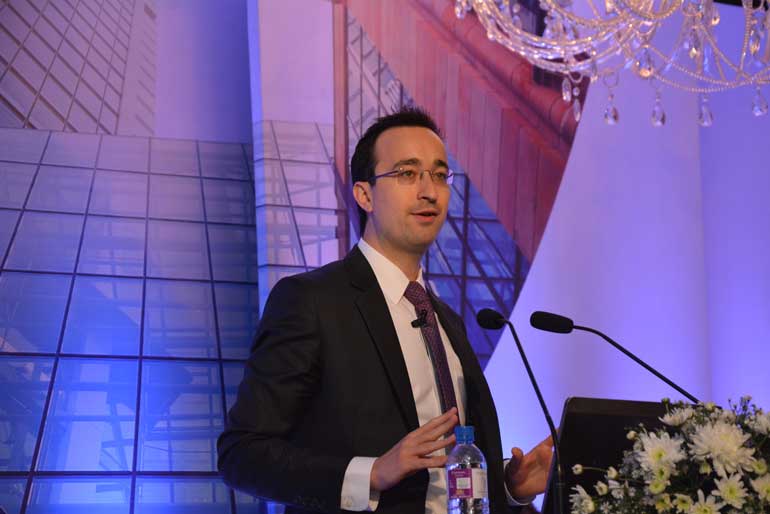Sunday Jan 12, 2025
Sunday Jan 12, 2025
Monday, 25 January 2016 00:00 - - {{hitsCtrl.values.hits}}
 Standard Chartered Bank (Asia) Chief Economist David Mann
Standard Chartered Bank (Asia) Chief Economist David Mann
By Uditha Jayasinghe
Taking a less gloomy view of the global scenario analysts ventured the possibility of the US Federal Reserve raising rates only one more time in 2016 before rolling back the rates, likely ending this year at the same level as 2015.
Standard Chartered Bank analyst and Asia Chief Economist Asia David Mann told the gathering the team’s outlook for 2016 showed only one more rate hike before the US Fed gradually eases the rates in the second half of the year. They also projected the Sri Lankan rupee would appreciate to about Rs.145 by June and peak at Rs.147 by the end of the year.
“We believe the pace of rate hikes from the US Fed matters more than the date of the first rate hike and that the Fed is likely to be cautious about hiking too quickly. Returns on US Treasuries are likely to be negative if rates are hiked at a faster pace than the market’s current expectation. While the Fed’s own forecasts still point to a faster pace of rate hikes than market expectations, we believe there is a high likelihood these forecasts will be scaled back,” he said.
Fed Governors have reiterated many times that rate hikes are likely to be gradual while Fed Chairperson Yellen has pointed out that a rapid pace of rate hikes could push the economy into a recession. Therefore, the Standard Chartered analysts believe the Fed is likely to err on the side of caution and bring its forecasted pace of rate hikes towards where the market was in December 2015.
Increased interest rates would be a blow for emerging markets such as Sri Lanka as capital flows would reverse, making it harder for developing countries to attract foreign investment.
As the world heads into 2016, the analysts recognise this will be the 7th consecutive year of recovery after the financial crisis of 2008/09, making it the fifth longest cycle in a hundred years. While history shows expansion periods tend to be longer after severe banking or financial shocks, the most important question for investment decisions is – how much longer does the current cycle have to go?
“We focus on the US cycle as it is the outlook that is most under scrutiny amongst the major economies – it is generally agreed Europe/Japan are mid-cycle and China is experiencing a structural slowdown. Our analysis has led us to believe that we are currently in the late stages of the US economic cycle. The precise length of ‘late stage’ is unclear (i.e. six months or three years?), but we nevertheless see a low likelihood of a recession occurring in 2016.”